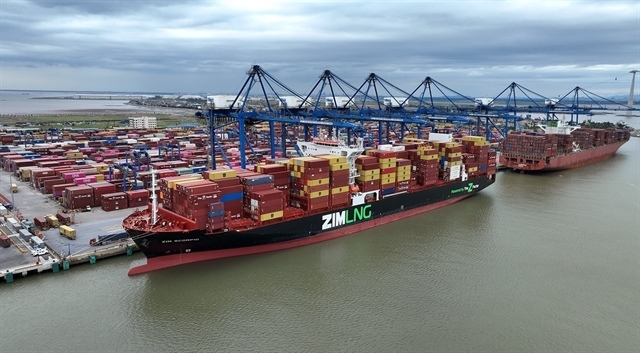Legal risks on acquisition of businesses in financial mire
Legal risks on acquisition of businesses in financial mire
The stagnating global economy has forced businesses into financial distress but has opened the door for potential buyers to consider strategic acquisitions that would be unlikely otherwise. Huyen Pham, senior associate of ACSV Legal, discusses the potential pitfalls that buyers should address in mergers and acquisitions of distressed assets in Vietnam.

Huyen Pham, senior associate of ACSV Legal
|
In any merger and acquisition (M&A) deal, both parties certainly want to minimise their risk exposure, especially if the target is financially distressed. Buyers prefer to acquire the target’s assets and sellers prefer to sell the target’s shares. Finding a compromise might prove difficult. Under normal circumstances in Vietnam, a share sale is the more popular option.
The main upside of an asset sale is that the liabilities of the target company normally will not transfer to the buyer, which reduces the buyer’s risk during the target company’s financial distress. However, Vietnam’s laws, including tax laws, do not have specific protection for the buyer against claims for outstanding taxes and other liabilities of the target company.
As such, in the worst case scenario, tax and other authorities may invoke the substance-over-form rule and assert that the buyer is the new owner, thereby making a claim against the buyer for past tax and other liabilities of the target company. To mitigate this risk, the buyer should negotiate to have warranties and indemnities from the seller regarding past taxes and other liabilities.
Foreign buyers need to set up an entity in Vietnam to hold and use the asset. If a foreign buyer already has an entity in Vietnam, the scope of business of such entity may need to be expanded to facilitate the use of the asset following the purchase.
Share sales
The main risk associated with share acquisition is that the buyer will acquire interest in the target company together with its liabilities. As such, the buyer should carry out tax and financial due diligence to uncover the target’s liabilities and request relevant warranties or indemnities from the seller. Share acquisition is in most cases faster and simpler than asset acquisition, more so if the transaction is structured offshore.
In a share sale, only the seller incurs tax, meaning the income tax applicable to the seller. However, if the company issues new shares for the buyer, neither party incurs any tax.
Debt to equity swap
The main reason for a distressed sale is the target’s disrupted cash flow, leading to an inability or decreased ability to service debt. As a debt restructuring tool, a debt to equity swap can provide a borrower with the ability to continue to operate without the burden of debt or at least reduce the burden. A debt to equity swap can be deemed as an alternative acquisition structure and, therefore, subject to certain requirements and consents as required under the applicable laws.
If the buyer is not an existing creditor of the target, besides the option of providing the target company a new loan, the buyer can acquire a debt from an existing creditor of the target business, thereby becoming a creditor of the target company. That said, it should be considered whether the acquisition of the debt could be deemed as debt-trade business which requires both the buyer and the seller to satisfy certain requirements before completing the transaction.

Distressed companies are beginning to consider M&A as a way of recovering their operations, Photo: Shutterstock
|
Restructuring
To best utilise the pros and minimise the cons of the acquisition options mentioned, the parties may consider a hybrid restructure, whereby the seller transfers assets into a new company within the seller’s group and the new company is then sold to the buyer. While this may take time, often a seller is better placed to transfer assets and contracts as many agreements permit the transfer or assignment of assets to affiliates.
For a seller, the orderly restructuring of the business and sale of a clean company is likely to maximise the transaction value. Change of control or other transfer/assignment consents can then be dealt with subsequently within the context of a clean new company and a known buyer.
For a buyer, completing due diligence on a clean entity (including the situation where selected assets have been transferred to it) is preferable to a complex due diligence required when dealing with a distressed target company with liabilities the buyer does not want to take on or only discovers after completion.
Due diligence
Whilst important in any M&A transaction, due diligence becomes particularly important when acquiring a distressed target. In addition to audit activities of loans and other extensions of credit, key contracts and other commitments will also need to be reviewed to ensure that the target has not breached their terms or conditions, and to ascertain the extent of default and liability of the target.
A distressed sale usually means that indemnities and warranties are limited, so a buyer will need to be fully aware of all the assets and liabilities of the target prior to the acquisition.
In an asset sale, the focus of the buyer’s due diligence will be on the assets to be acquired. Consequently, the due diligence process can, in many cases, be streamlined. In a share sale of a distressed target, the focus will be the full business of the target company. As such, unless the buyer is willing to accept the risk (which may be the case if the buyer already knows the business of the target), the due diligence will need to be detailed and look at all aspects of the target and its operations.
Insolvency considerations
Under Vietnamese law, a company is deemed insolvent when it fails to meet any of its payment obligations within three months from the due date. Once a company falls insolvent, a bankruptcy request can be submitted to a court by unsecured or partly secured creditors; employees or trade unions; or the insolvent company or its qualified shareholders, although there is no specific timeline for this submission. The court upon receipt of the request may issue a decision to commence bankruptcy procedures, putting the company into bankruptcy proceedings.
If the target company has already become insolvent but no decision to commence bankruptcy procedures has been issued, the buyer should work with the seller to help the target company exit insolvency before bankruptcy proceedings commence at the court, either by negotiating with creditors or financing the target company to pay its other debts.
This is because M&A deals in respect of an insolvent company after bankruptcy proceedings have been commenced are generally very complex, time-consuming, and should only be considered by investors if they are very confident that their business purpose can be achieved by acquiring the insolvent target.
Administrator’s approval
After the relevant court has decided to commence bankruptcy procedures, the presiding judge will appoint an administrator (meaning licensed individual or company) to manage the company’s assets and business activities.
Activities in connection with borrowing or a pledge, mortgage, guarantee, purchase, sale, assignment, leasing out of the assets, sale or conversion of the shares, or transfer of the ownership rights in any asset of the insolvent company must obtain the administrator’s approval before conducting. Without the administrator’s approval, the sale of an asset or share of the insolvent target business will be invalidated.
Creditors’ role
Once the administrator has finished the inventory of the insolvent company’s assets, a conference of the company’s creditors may be convened. At the conference, the creditors can choose to pass a resolution on the recovery of the company’s business that may propose a sale of shares or assets of the company. If such resolution of the creditors is then approved by the presiding court, the transaction specified in the resolution can then be conducted.
Therefore, the buyer being a creditor of the target company may be advantageous, since the buyer can attend and voice its thoughts at the creditor’s conference. If the buyer is an unsecured or partly secured creditor, it has even more control on the issuance of the resolution, as fully secured creditors cannot vote on the issuance of the resolution of creditors.
Invalid transactions
A transaction of an insolvent business which was conducted within six months (or 18 months if the counterparty is a related party) prior to the date when the court issued a decision to commence the bankruptcy procedure shall be deemed invalid, if it falls into one of the following cases:
- An asset assignment transaction which is not at market price, meaning undervalue transactions;
- Conversion of an unsecured debt into a debt secured or partly secured by the assets of the insolvent business;
- Payment or setoff which benefits a creditor in respect of a debt that has not yet become due or with a sum that is larger than a debt which has become due;
- Donation/gifting of assets;
- The transaction is outside the purpose of the business operations of the insolvent business; or
- Other transactions for the purpose of disposing of the assets of the business.
Material adverse change
Where there are multiple potential buyers, aside from price, deal certainty may be the determining factor for the seller. This means that the seller will tend to resist termination rights that may be typical on non-distressed sales where there is a split signing and completion. For the buyer this means that risk will actually transfer on signing, not on completion, though a split signing and completion does exist.
A buyer of a distressed asset is likely to seek assurances that certain events will not happen between signing and completion and will typically seek a right to terminate the agreement on the occurrence of those events. Triggers for these termination rights often include any steps taken towards insolvency, a loss of any key licenses, customers or contracts or a default under any borrowings.
In general, due to the adverse effects of COVID-19, distressed companies are starting to consider M&A as a means of recovering business operations. It is crucial for buyers to structure the deal wisely and address the potential pitfalls to maximise the benefits and minimise the risks of acquiring a distressed target.



























